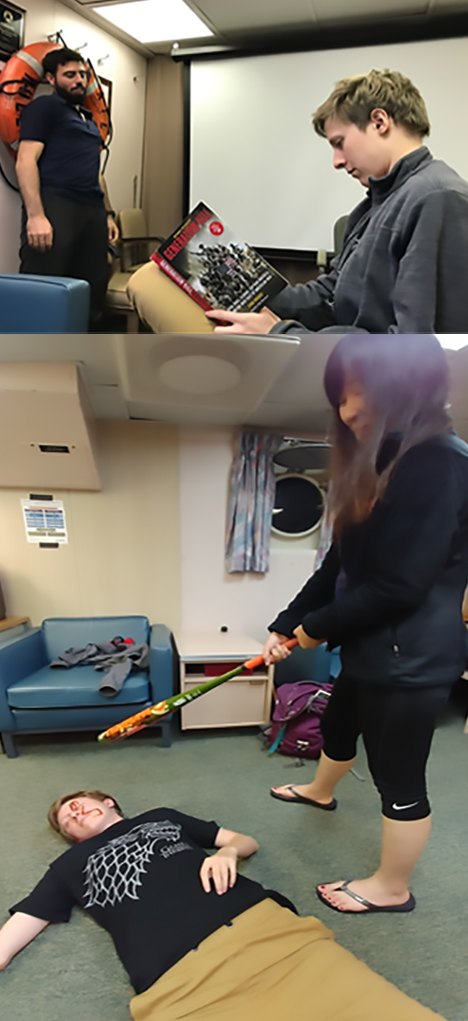Rookies at sea
Laura and I come from different geographical backgrounds. I grew up in the hot Mediterranean climate and Laura experienced the rainy climate of northern France. For our next adventure, we were both called to sea for the same purpose: Science. We are not talking about your average kind of research, but what we believe is the most exciting kind: studying ocean-atmosphere coupling onboard of a fully equipped oceanography research vessel: The R/V Atlantis. For us, this is reminiscent of the famous sea explorer and scientist, Jean Jacques Cousteau. To celebrate the end of our gruesome PhDs, we are going to spend the next twenty-five days in the middle of the Atlantic Ocean (aka, in the middle of nowhere) with land nowhere in sight. What a thrilling start of our scientific careers!
As we are writing this blog, our ship is steadily heading at twelves knots over calm and rough waters to reach the northern Atlantic Ocean. It is there that a beautiful annual phytoplankton bloom is starting. In a restricted environment, one would think that this adventure could be overwhelming and overcrowded. But veterans’ tips, everybody’s involvement and their welcoming attitude led to a smooth transition from land to sea. It is also impressive to watch all members follow their daily patterns which look like a beautifully orchestrated dance amid chaotic waves and winds.
As newbies to the sea, we discovered that the periodic rocking of the ship leads to a state of comatose, distracting us from our true purpose; to report hourly that all instruments are working. Luckily, great company (and a few role playing games), (amazing) food, and strong coffee kept us, so far, “sane”.

During the transit there is a little time for some fun role playing games. Her murder on the R/V Atlantis: (top) Georges hangs while Laura casually reads “Generation Kill”. (bottom) a few moments later, Laura faces the same fate.
The atmosphere-ocean boundary looks infinite from our vantage point and one might mistake it for simple. Yet the biology that lays beneath the water could affect the physical and chemical properties of tiny particles, created by the breaking of waves, that are lofted into the atmosphere. These particles are too small to be seen by the naked eye but play an important (yet uncertain) role on our climate; aerosols are the seeds on which clouds form. It’s not every day that an expedition of such magnitude happens, but when it did, we were not afraid to get wet.
Written by Georges Saliba and Laura-Helena Rivellini



